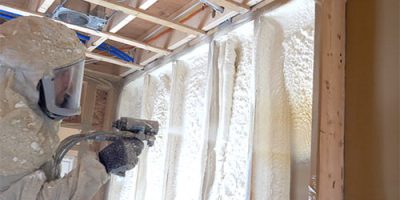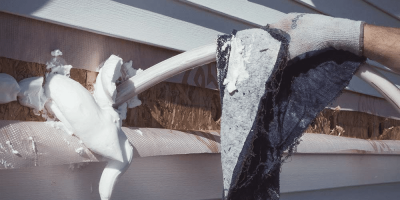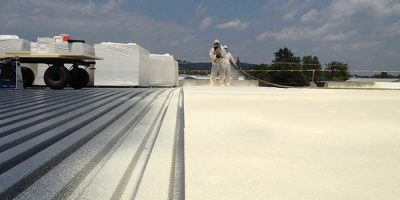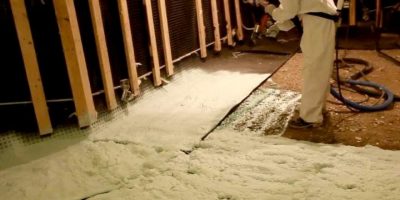First introduced in the 1980s, open cell spray foam is a type of building insulation. Chemically, it’s made up of two components: resin and polyisocyanurate. Before being sprayed these are kept separate, but as they are drawn from their separate drums and into a heated hose, they mix to form a foam that hardens into a solid.
Open cell foam gets its name from its structure: the cells that make up the foam aren’t totally closed off, unlike its cousin, closed cell foam.
Open-cell foam is characterized as being composed of many air bubbles held within a polyurethane matrix. As with many insulations such as fiberglass, it is this trapped air that lessens the heat transfer through the foam. It is applied through a spray nozzle to an open wall cavity and quickly expands to fill the space, adhering tenaciously to anything it touches. With R-values of 3.6-3.8/in., it does not match the insulating capabilities of closed-cell foam, but it still has its applications. In industry, it is commonly called “half-pound” foam. Open-cell foam does not block vapor but instead allows it to pass through the foam matrix. It is particularly effective in hot climates where loads are primarily cooling. It is cheaper than closed-cell foam, and less dense. When installed in wall cavities, the foam may overfill the cavity. Later, the excess is trimmed away.
Open cell foam is more like a sponge, while closed cell foam is more like a pile of bubbles. This structure lends this type of foam a softness, flexibility, and low density it wouldn’t otherwise have. Open cell foam is also permeable to vapor, so it’s able to absorb and release moisture like wood. This breathability allows moisture to get through, but it also keeps it from pooling behind the foam in the building structure.






